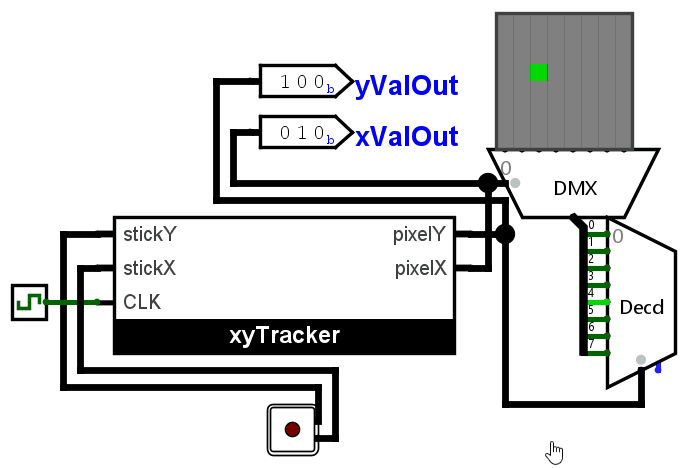Lab 5: Moving Dot
Revision as of 15:34, 31 March 2025 by Lawrence Quizon (talk | contribs) (Created page with " == Background == Now that we've familiarized ourselves with basic sequential circuits in Lab 4, let's create something large! Synthesis techniques have been taught in the l...")
Background
Now that we've familiarized ourselves with basic sequential circuits in Lab 4, let's create something large! Synthesis techniques have been taught in the lecture as a process like the following:
- Describing the behavior
- Draw the state diagram
- Minimize states
- Construct excitation tables
- Design the combinational logic using KMaps or logic blocks.
- Construct circuits
Most of this process (3-6) is almost completely mechanical in nature, and in fact, can be automated. However, what remains the engineer's job until today is to describe the appropriate behavior and drawing the correct state diagram accordingly.
Instructions
Your activity for this lab is to implement the sequential controller of a moving dot controlled by a joystick as demonstrated in the figure. Your restrictions are as follows:
- You may instantiate your Lab 2 submission as a block in this lab.
- You may use anything available in Logisim.
You may use your previous lab submissions to implement this lab.
- Download the Lab 4 template in UVLe.
- Enter the xyTracker block provided in Logisim.
- Implement the two 2-bit inputs and two 3-bit outputs by your method of choice. For example, I recommend implementing two sequential circuits that can each increment or decrement its output value by 1 per clock cycle.
Notes
- Again, do not move any input or output pins in the template.
